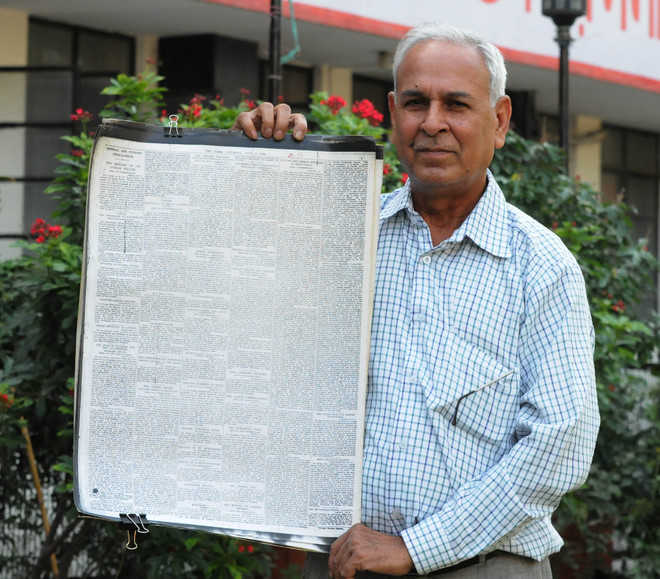Aakanksha N Bhardwaj
Tribune News Service
Jalandhar, September 17
‘Sir W Curzon Wyllie shot dead by an Indian’ reads the headline of a well-kept ‘The Times’ newspaper from London dated July 2, 1909. The Indian who had been referred in this headline is Madan Lal Dhingra, who is considered as the first Indian revolutionary to have assassinated a British official on a foreign land.
Desh Bhagat Yadgar Hall in the city has preserved each and every page of the newspaper which is the only source of information on what had happened when Dhingra killed Wyllie. The newspaper has also covered the trials after the assassination and what Dhingra had said after he shot at Wyllie and on the day he was executed.
The newspaper shares some interesting facts about Dhingra. Chiranjilal Kangniwal (71), the research scholar and librarian at the yadgar hall, said: “A report suggests that after the death sentence was announced, one of Dhingra’s well-wishers came to meet him and asked if he wanted anything. The valour of Dhingra can be known by his reply, “Please get me a mirror, I want to see if I look perfect and there is no sign of any fear on my face.”
Also on the day, when the revolutionist was executed, August 17, 1909, he did not give any inkling that he was nervous, he instead showed braveness and said: “I am not afraid of dying.”
In a report on Dhingra carried in The Times newspaper on July 3, it was written “Dhingra, from Punjab, has been studying engineering at University College. He remained quite cool and collected after his arrest. He was dressed in a dark jacket suit and wore a blue turban. He was taken to the Walton Street police station and was said to have slept well in the night.”
In another report in the newspaper, Kangniwal says that it was mentioned that right after he shot dead Wyllie, there was an uproar and hue and cry but Dhingra was standing there calmly and still. In the commotion, Dhingra’s specs fell on the floor.
“When police officers came and were trying to hold his hands, Dhingra in a confident manner told them to let him first take his spectacles and then they could tie his hands’ with an enlivened face,” the report said.
Kangniwal says that for years and years, people were even afraid of “talking” something against the Britishers.
“It was a belief that no one in the world could shake the British empire, but a young man from Punjab killed a Britisher on their land and busted this myth. I have a great regard for such a character,” Kangniwal said.
He said: “These reports are the only proofs about the revolutionary act by Dhingra and these are present only at the yadgar hall.”
Unlock Exclusive Insights with The Tribune Premium
Take your experience further with Premium access.
Thought-provoking Opinions, Expert Analysis, In-depth Insights and other Member Only Benefits
Already a Member? Sign In Now










